-
Posts
542 -
Joined
-
Last visited
Content Type
Profiles
Forums
Gallery
Events
Posts posted by Ab Hoving
-
-
-
I like this project very much. Great research, nice building, amazing result. Congratulations.
-
You are welcome and good luck!
Ab
- Tsarist Walrus and mtaylor
-
 2
2
-
Maybe I can shed some light on this.
The book 'The ships of Abel Tasman' contains two draughts, one of the yacht Heemskerck and the other of the fluit Zeehaen. The book deals with the process of designing these two reconstructions and tells the story of Abel Tasman's travels in 1642. Published by Verloren. https://verloren.nl/boeken/2086/253/168/maritiem-en-waterstaat/the-ships-of-abel-tasman
The book '17th century Dutch Merchant ships' contains the draughts of many characteristic vessels of the Dutch merchant fleet, amongst which several fluits. One of them is the Zeehaen. Published by SeaWatchBooks: https://www.seawatchbooks.com/ItemDisplay.php?sku=114003
I hope this helps.
Good luck,
Ab
-
-
If you are looking for material for sails this address may be the solution for your you: Whaleys (Bradford) located at Harris Court, Great Horton, Bradford, West Yorkshire, BD7 4EQ in England. E-mailaddress: info@whaleysltd.co.uk.
For my purposes the best material to work with appeared to be 'voile cotton', but also 'Navara Fine Lawn White' works splendidly for my 1/77 scale. For the bigger scales there is also 'Poplin cotton shirting neroli white'. Prices are here.
The material can very well be treated with starch and dried as wanted with a hair-dryer:
Good luck,
Ab
-
A former colleague at the Rijksmuseum, Susan Meyer, suggested i should use 'voile cotton' for sails and she gave me a piece, which I used for this ship, with the result shown here-fore. She also mentioned the name of an English company which was most helpful in finding the right material after a sample of the wanted textile was sent to them. It is a remarkable company, called Whaleys (Bradford) located at Harris Court, Great Horton, Bradford, West Yorkshire, BD7 4EQ in England. I sent them a sample of the very fine cotton I used until my stock (which existed of a sort of textile, I removed from old maps, soaked in water) was gone and I had to find a replacement. Today I received an answer with several samples of cloth that were very close. Indeed, like my colleague suggested 'voile cotton' was one of them, but there was another, called 'Navara fine lawn white', which seems even slightly better. It is slightly less transparent and very closely woven.
It costs 22,74 pound per meter (1.55 m wide) and if more than 2 meters are purchased the price is 18,95 pound. 'Voile cotton cream' is slightly cheaper but comes with a width of 1.40 m.
I supposed some of you just wanted to know. -
More enthusiasm than I anticipated, thank you very much. It's just pottery, little more.
Wefalck: the scale is 1/77 and the sails were simply sprayed with a spray can of starch your mother probably used while ironing the sheets. Her hairdryer did the rest (together with some pushing and pulling of course).
'Hans' We can discuss some ins and outs for the kits you sell, if you like.
GrandpaPhil: Your own efforts with paper are not too bad either...
Druxey: I'm flattered being told that by you. You are not particularly from the easy approach like I demonstrate here.
Petr: Thanks, but in your country there are so many better builders, you included.
Marcus: I missed your recent updates about planking the fluit. Problems?
- druxey, GrandpaPhil, Bob Legge and 3 others
-
 6
6
-
-
OK Bruce, here it comes:
Start a new project
Insert measurements and control point.
Choose front view wireframe
Open body plans and find your chosen draught
Click to select your draught to become yellow.
Click and drag the draught to the centerline and base line.
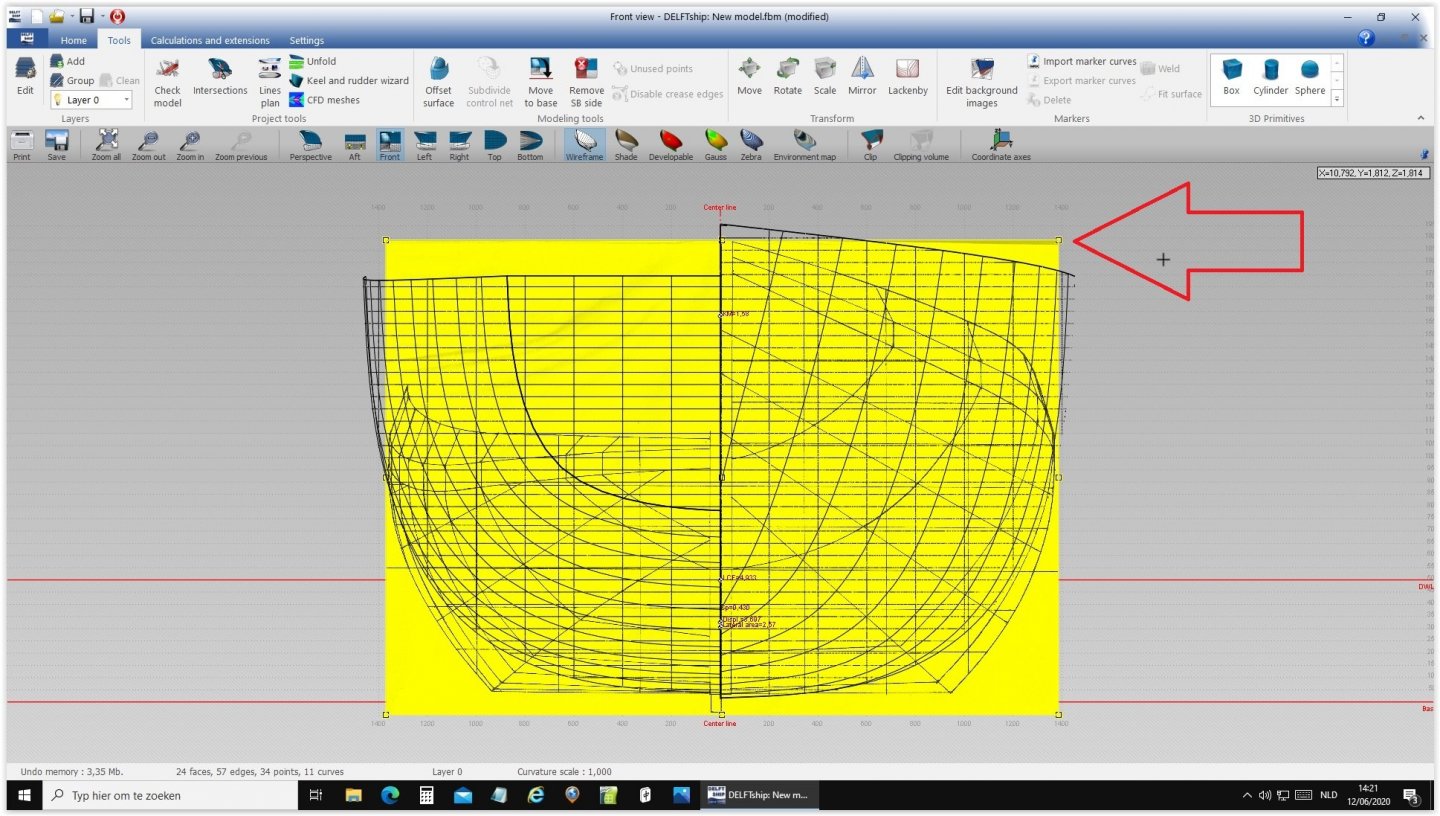 Click and drag the top right corner of the draught for the right dimensions.
Click and drag the top right corner of the draught for the right dimensions.
Click and repeat the last step until a perfect fit it reached
Click on image red arrow and control net black arrow.
Now you can drag the control net points until the frames of both drawings are identical. This takes some exercise.
Extra example hulls can be downloaded from the Delftship site, where they are selected by ship type.
Hope this helps, good luck from Rene.
Ab
-
-
Just my 50 cents....
I like sails on models. They add expression and function. But if it is done, it has to be done well, as several of the shown examples clearly demonstrate. Too many people make yards without sails hoisted to the tops of the topmasts. I hate that. No sailor will ever take the trouble of hoisting an empty yard. Still, if a museum ship like the Constitution is modelled, or a navy board model is done, the absence of sails is right and logical.
I always make sails on my models, furled or not. But if added, to my opinion they should express the conditions under which they are used. Therefore the choice of sailcloth is vital. After many efforts with various sorts of unbleached cotton I came to a fabric called 'voile cotton'. Almost transparent, but it can be colored well and if applied with a spray can of starch and a hairdryer, the result can be quite satisfying:
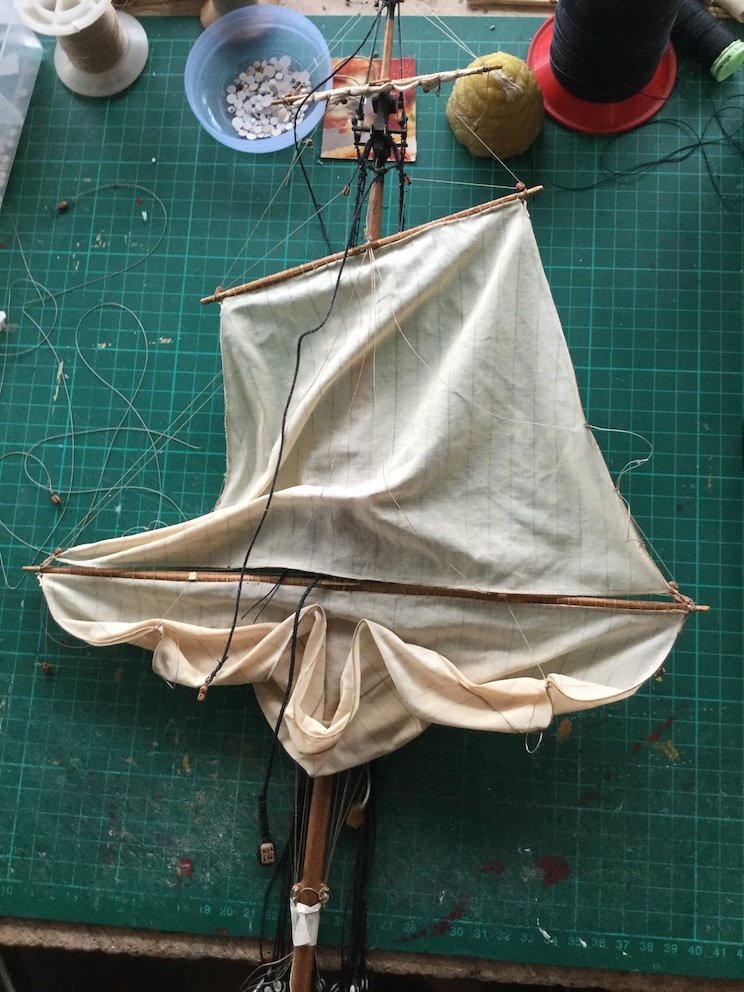
I usually prepare my masts separated from the model as long as possible to save my poor back. Once the sail is modelled the way I want it (in this case almost no wind, drying the sails) the mast can be stepped and the final cordage is done. Almost finished now:
The model (1/77) is scratch-built out of paper, so a very logical step would be to also use paper for the sails. In the case of clipper ships paper can be very well used, as shown above, because of all the yards, keeping the narrow sails under control. But for my type of rigging with large sail areas I never succeeded in applying paper sails successfully. The idea remains tempting though....
One of the drawbacks of making models with sails in a calm is that the ropes will have to 'hang' in a natural way. I use shellac for that. Just take a length of rope, hang it with a weight for half a day after treating it with shellac. The stiff rope lets itself easily bend into a natural curve.
Just a hint, for what it's worth.
Ab
- druxey, GrandpaPhil and RussR
-
 3
3
-
I did try SilkSpan, thank you Druxey. You are absolutely right as for the furled sails, as you clearly prove with your pictures. For hoisted sails I think it gives a too 'boardy' result. It may work for others, but I want a different look. The material I found seems to answer my needs, we will see how it all develops.
-
It has been a while since we had the short conversation about the material to choose for natural looking sails. I jumped into several experiments after wefalcks suggestion of using paper for sails and I managed to get all the paper I needed. However, I never succeeded in creating the result I was looking for. So I went on searching for the right kind of textile. Thanks to one of my former collegues at the museum I managed to get some stuff called 'voile cotton' that answered my needs.
Since the hull of the man-of-war I referred to earlier in the thread was finished, I decided to try my hand on an experiment with almost windless conditions like on this Van de Velde painting in the Rijksmuseum:
Because I don't want to hurt my back too much I prepare my masts, including blocks, sails and lines on the table.
In this picture sails and blocks are in position, lines still have to be added.
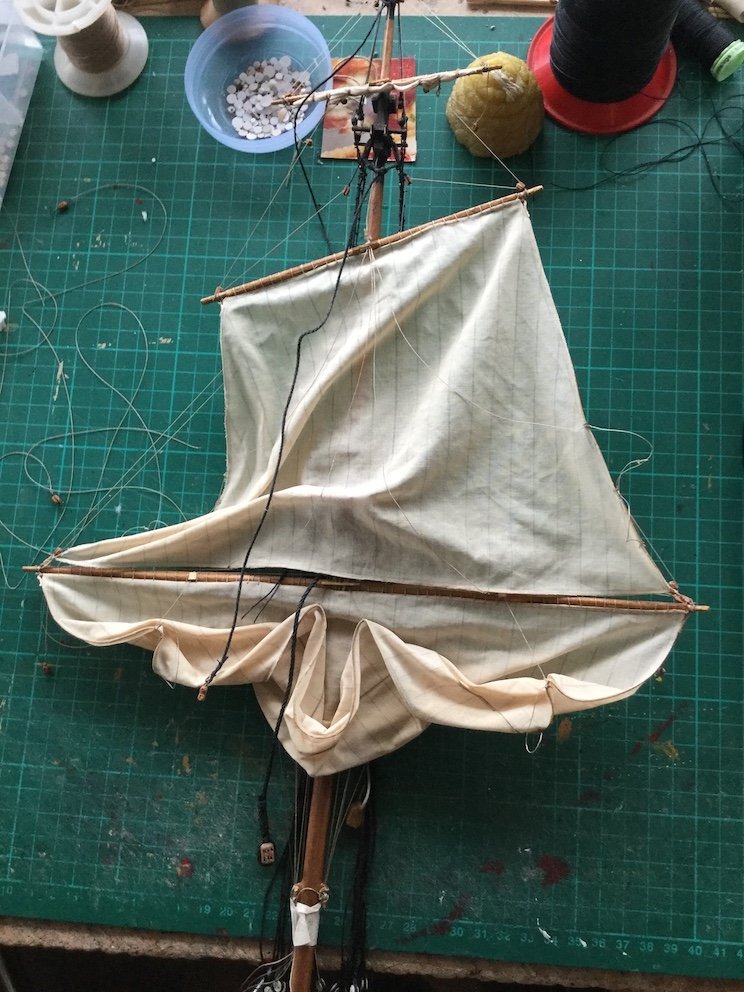
Here the sails are sprayed with starch and dried with a hair-dryer, while modeling them in the shape I want. Purpose is of course to get natural shapes, expressing the weight of the sails together with the little wind that furls them. Hard to explain I'm afraid. All the lines are temporarily belayed at the mast-foot, they will be attached at the right locations later.
And this is how it will all look after completion. The main mast still has to be done. The shrouds and stays of the foremast can be fixed now, after which braces, bowlines and tacks follow. Sorry for my lousy photography techniques.
By the way, my pleasure vessel experiment, the subject of this (a bit confused) thread, has led to a kit, produced by Kolderstok (http://kolderstok.nl/speel-jaght.html). Kits are not my cup-of-tea, but this one is unusual in the sense that the traditional egg-box system with its terrible straight-planks-method has been replaced by a sort of shell-first technique. Because Rene Hendrickx, my super-Belgian partner-in-crime, created the shapes of all the planking for the boat, the kit is built by using a pdf-mold, used to temporarily support the laser-cut planking. Thus an empty shell is created after lifting from the mold, which can be finished like a real hull. A new development in kits in my (limited) vision for a very reasonable price. Sorry if I overlooked kits which followed the same method, as I said, kits are not really a point of interest for me.
Here a page from Kolderstock's three language manual, showing what I mean.
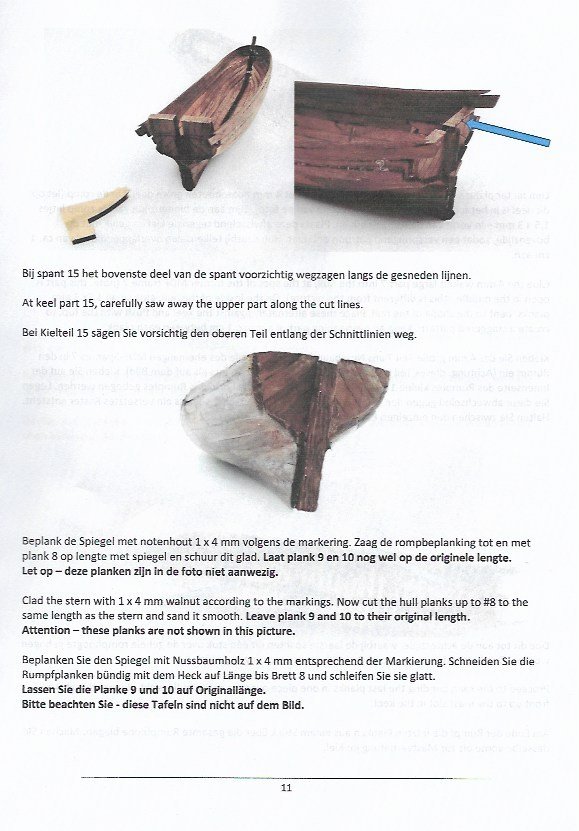
-
Don't you think it would be wise to mark the lines of the bottom, the bilges and the lower wale on the hull before applying any strakes? That way you can monitor the various widths of the planking to avoid nasty corrections higher up the hull.
The bottom is roughly 2/3 of the total width, the top of the bilges were mostly reached with three (sometimes 4) strakes. The position of the lower wale is there already, but has to be fine-tuned to ensure a fluent line. This is essential!
-
For the time being you get the benefit of the doubt. If this really works it would be a fantastic system. But how to deal with ending planks in the bow and extra planks in the stern? Like here:
You really got my attention, Marcus.
- cog, GrandpaPhil, mtaylor and 1 other
-
 4
4
-
Very smart idea, but I have some doubts. In real life not a single plank in a ship is straight. How will you follow the lines with straight planks?
-
Not really complicated. The ship is 120 feet. Over that distance 4 1/2 planks are needed to go from fore to aft (of course you get away with shorter planks because you don't have to cover the entire 120 feet, but that is all marginal). So 120 divided bij 4 1/2 is 26, 6 feet, which equals 7,75 meters. Of course these are not specific measurements, just estimations with a wide margin.
Clear?
-
If your planks are going to be 7,5 meters in a scale of 1/37,5 you have to divide 750 cm by 37,5, which is 20 cm. The butts should be a littler bit over 2,5 cm long.
It's elementary, my dear Watson...:-)
By the way, the list of ship's parts I was referring to is only in the Dutch version of my book (page 296), not in the English one.
-
- mtaylor and Devin Camary
-
 2
2
-
Excellent question Marcus,
In Witsen's book there is list of parts needed to build a 120 feet long fluit. He specifies the planking needed as 4 1/2 for every strake for this length. That means that every plank is about 27 feet, which is roughly 7,50 m. I don't see any reason why that should be different for deck planks. Don't forget that the butts of the planks overlap each other for the width of three frames, which is more than a meter.
-
-
-
Yes, it's definitely water based, probably some methyl alcohol as well. At least it does not smell as sharply as the car fillers.
Don't think you can use other fillers though. I tried a lot and this one works the best, but the others weren't too bad either.
I read on the tube: mixture of 5 chloor-methyl-4-isothiazolin-3-on [EC no 247-500-7] and 2-methyl-2H-isothyasol-3-on [EC no 220-239-6](3:1).
Now, if that is clear to you I would be surprised, it does not ring a bell for me.
But it's great stuff! :-))






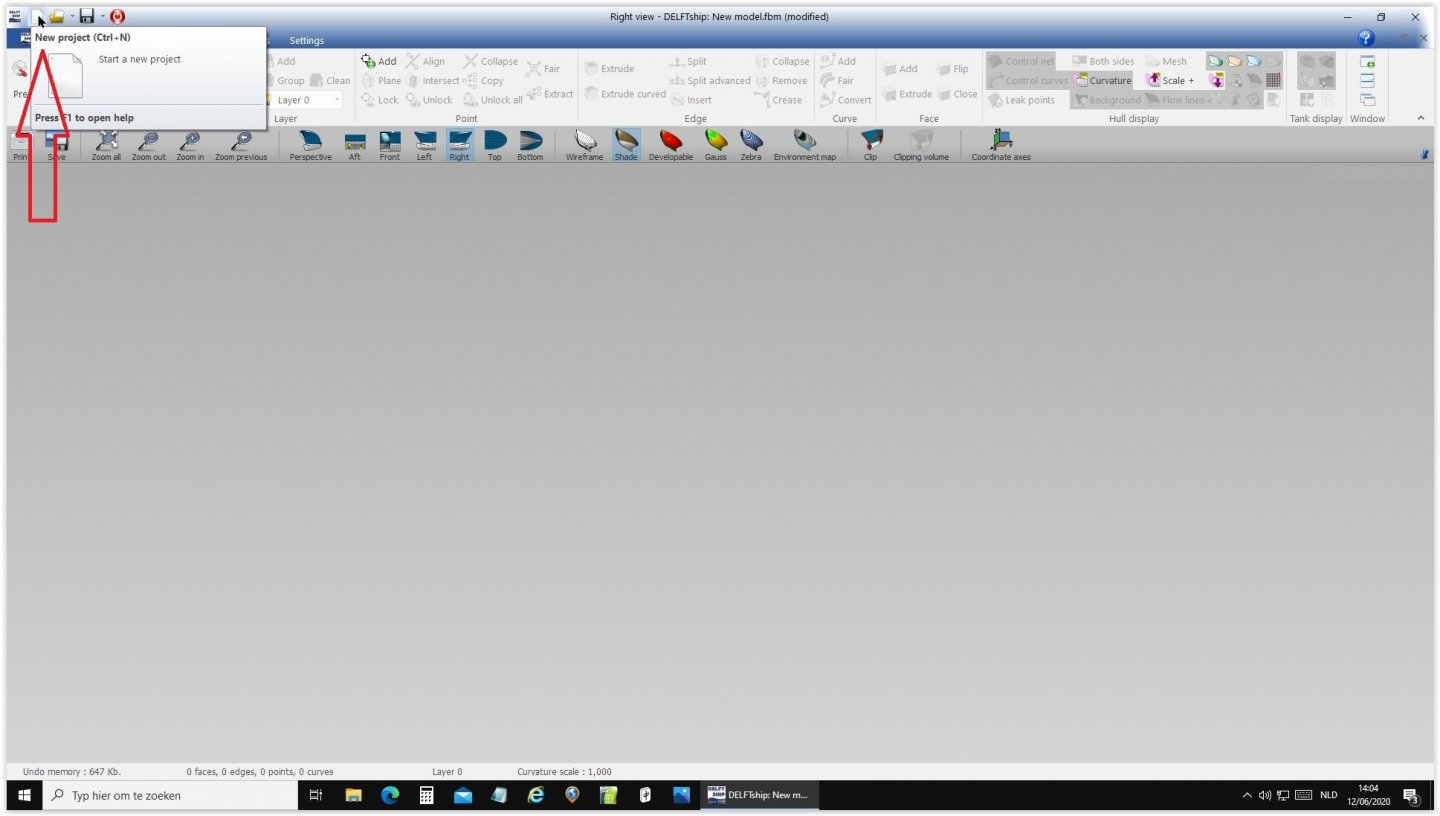
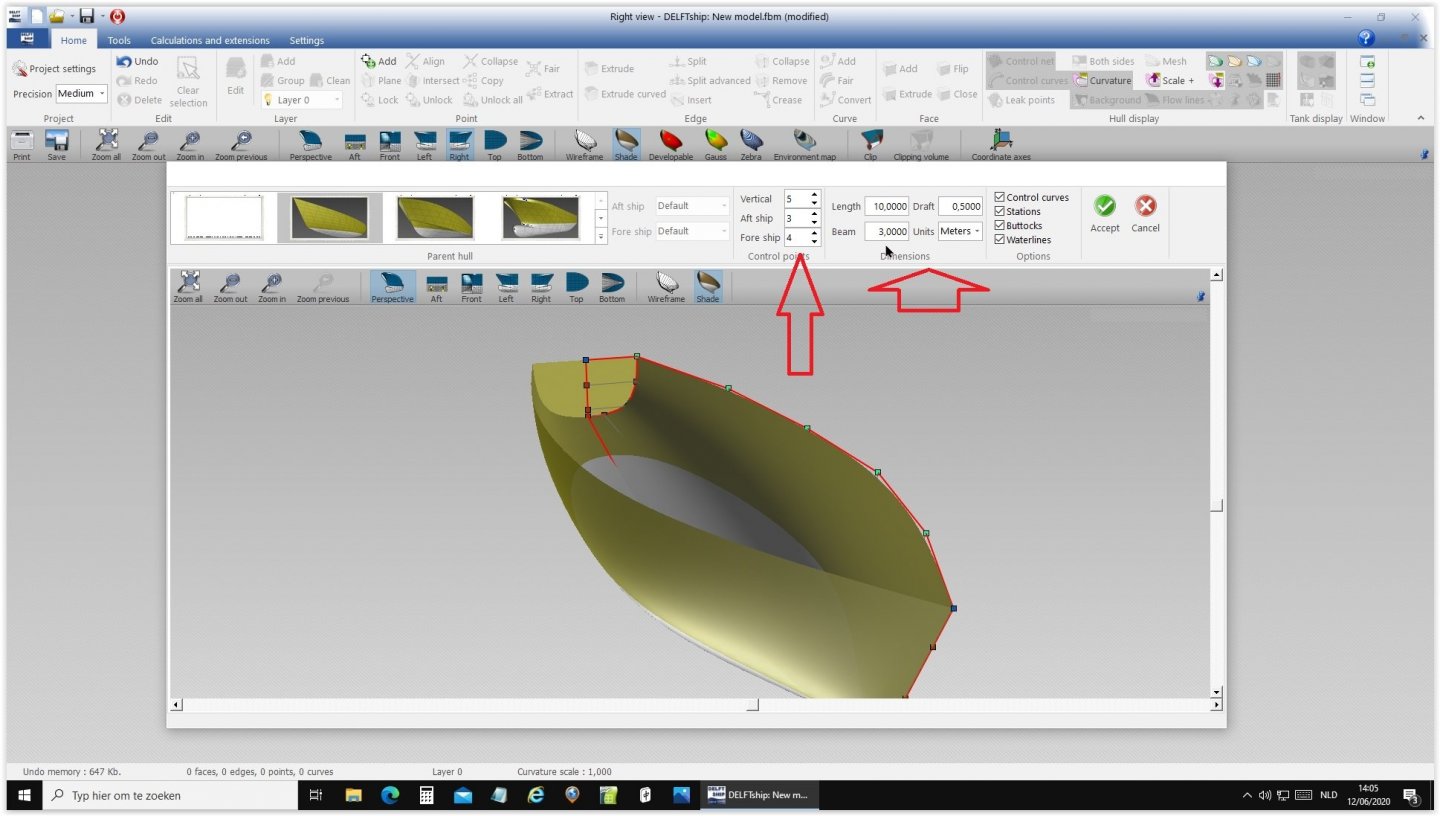
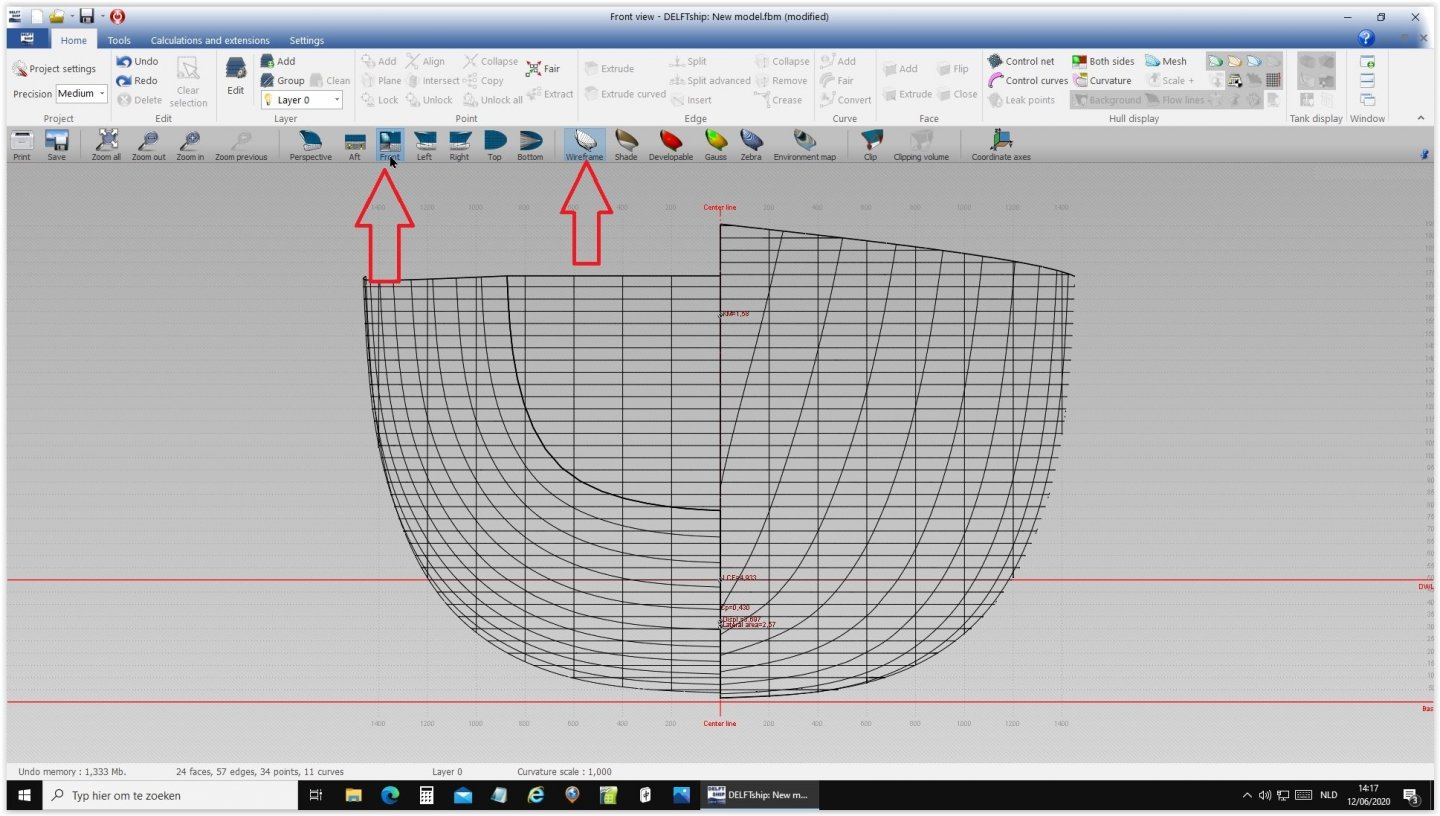
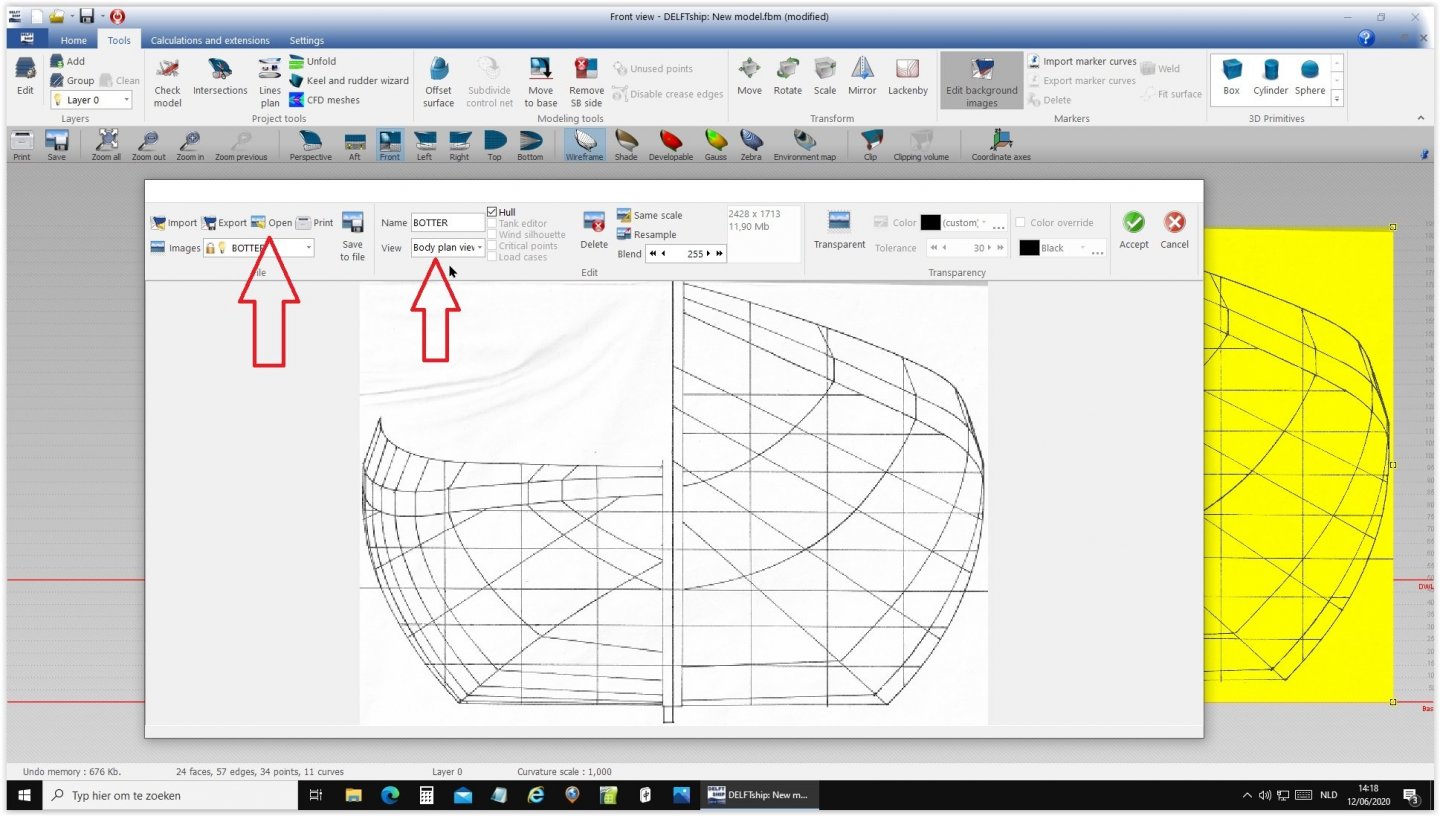
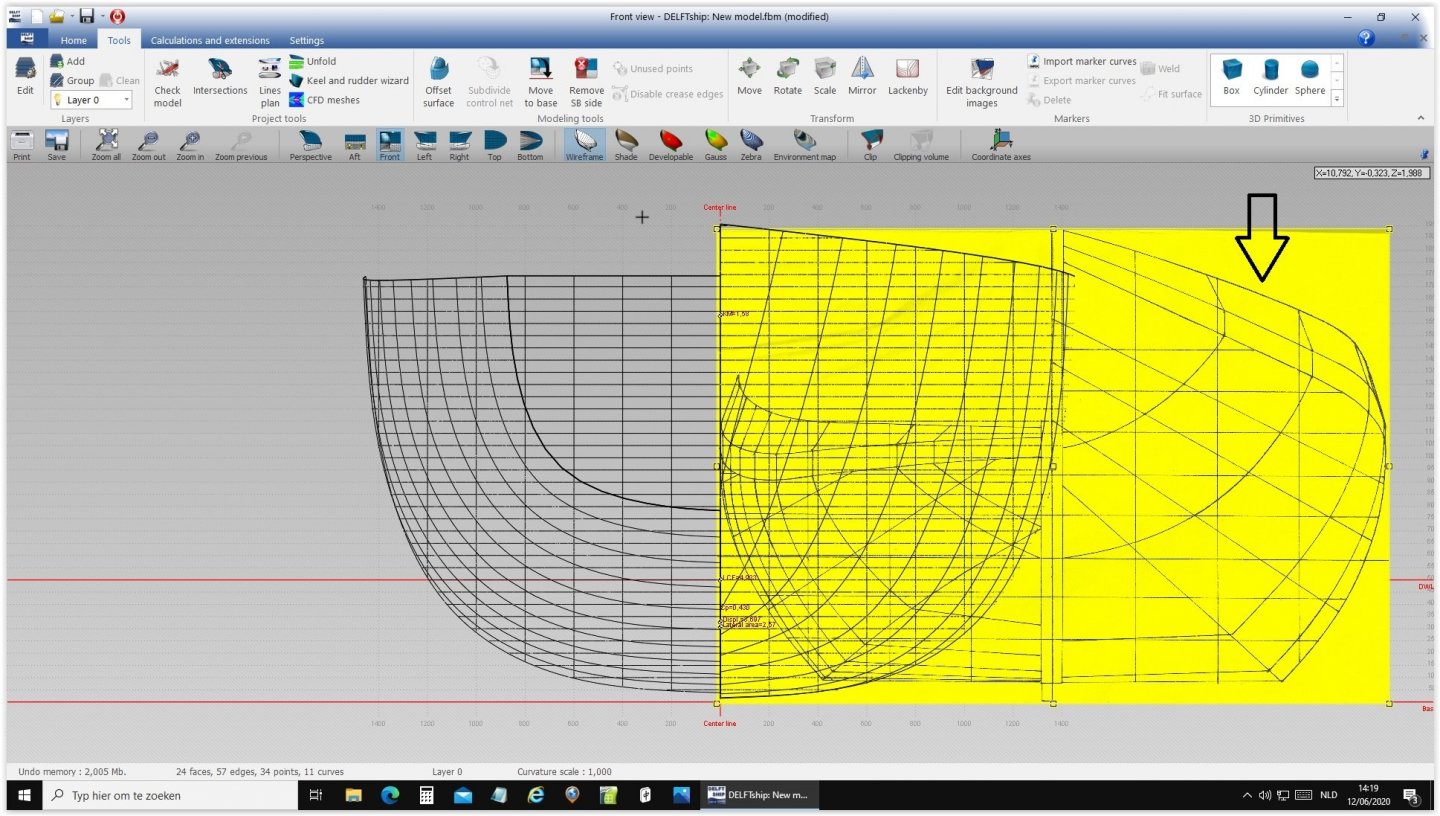
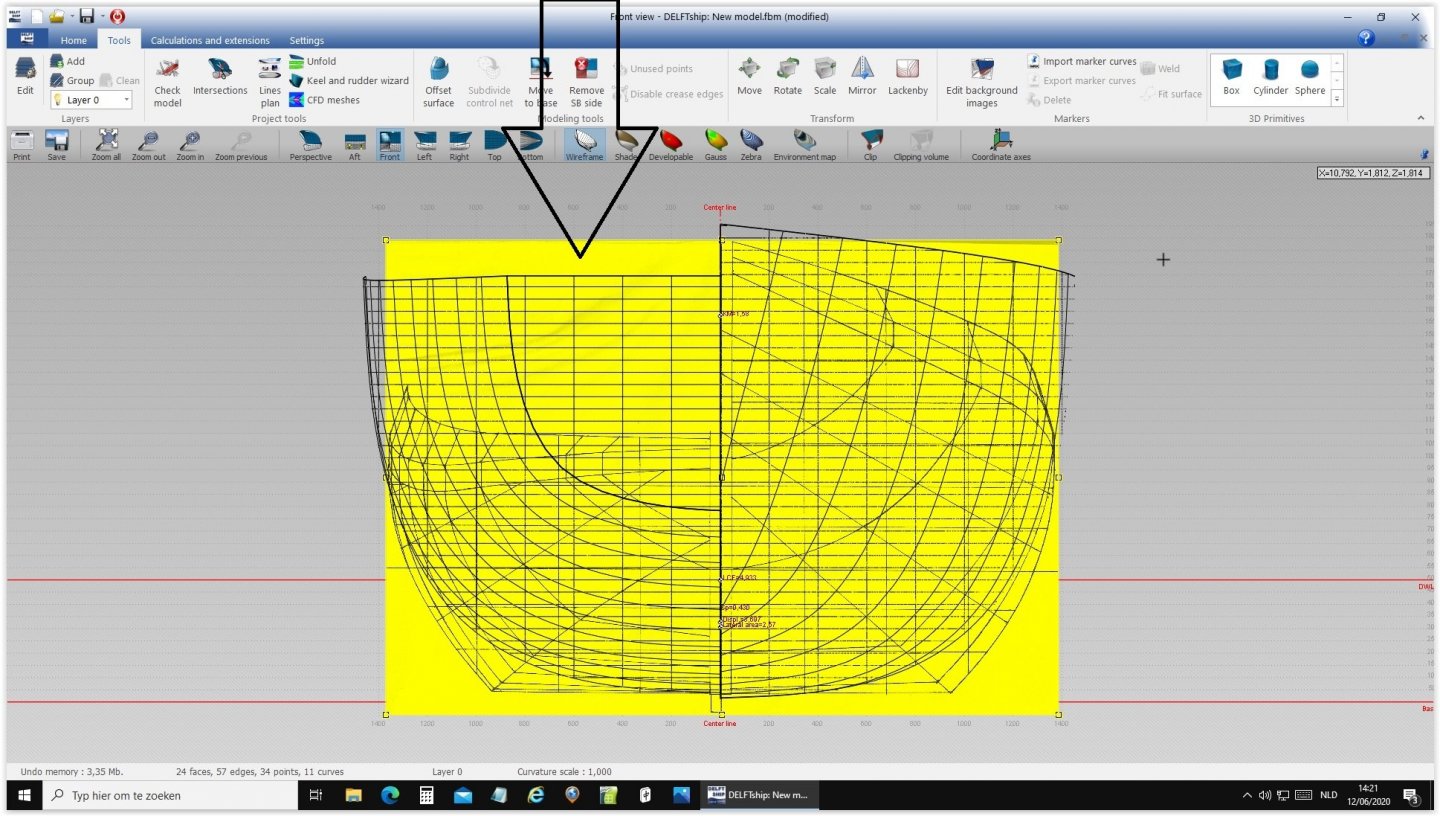
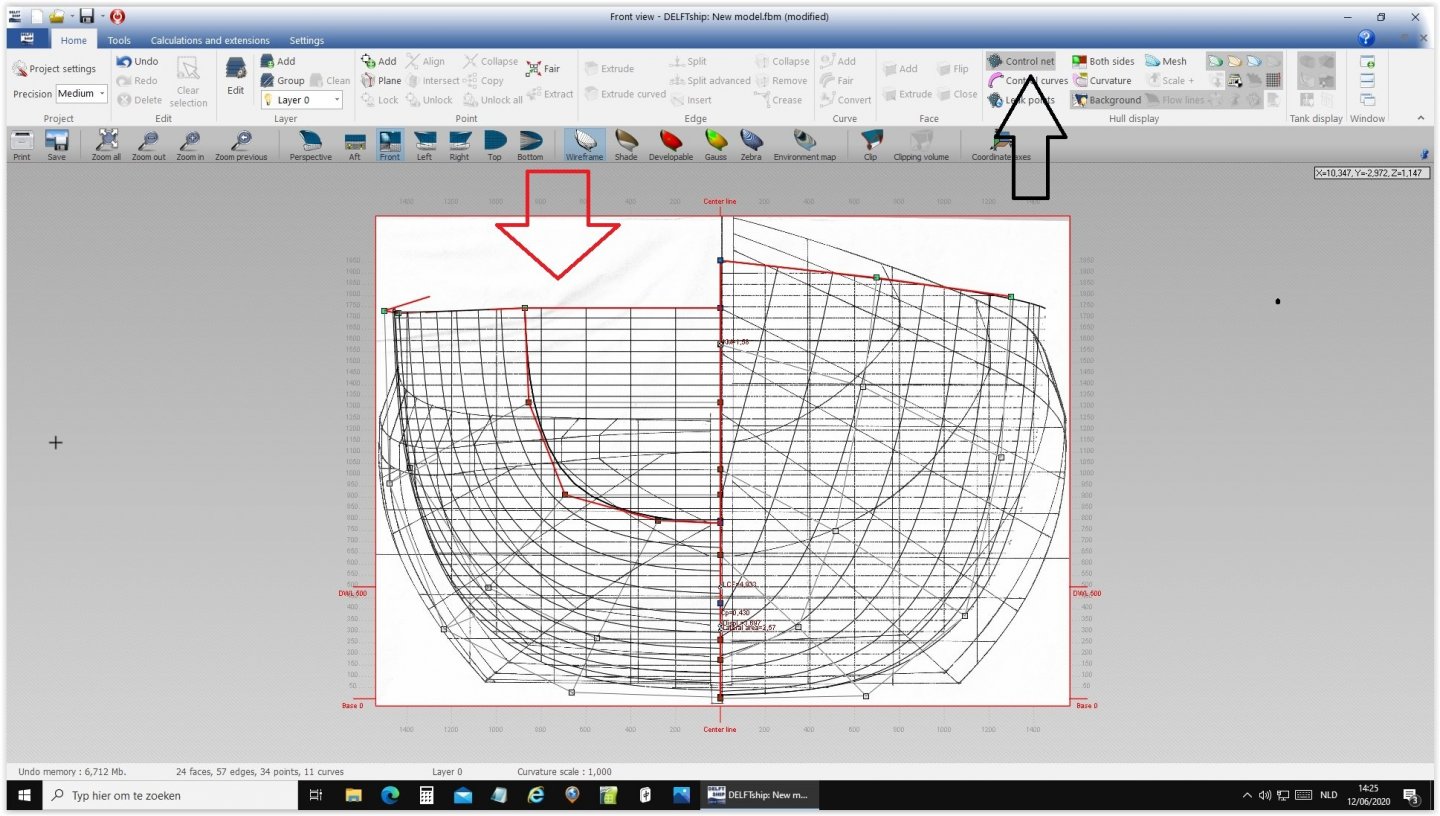
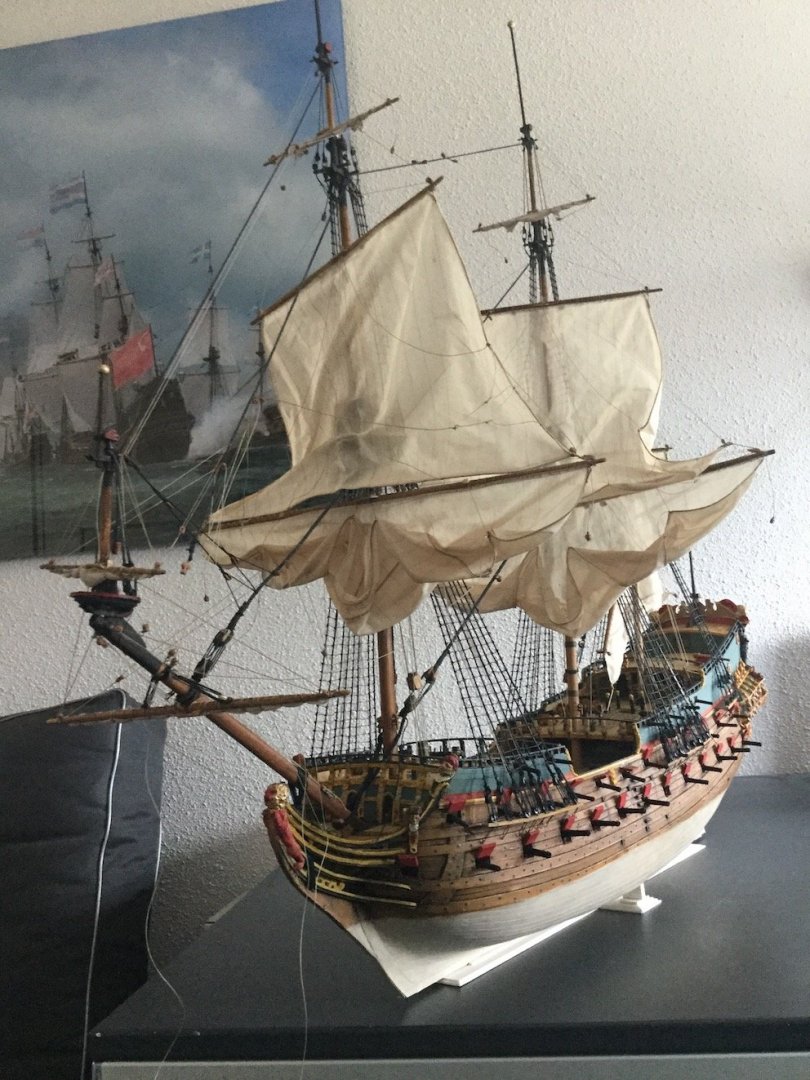
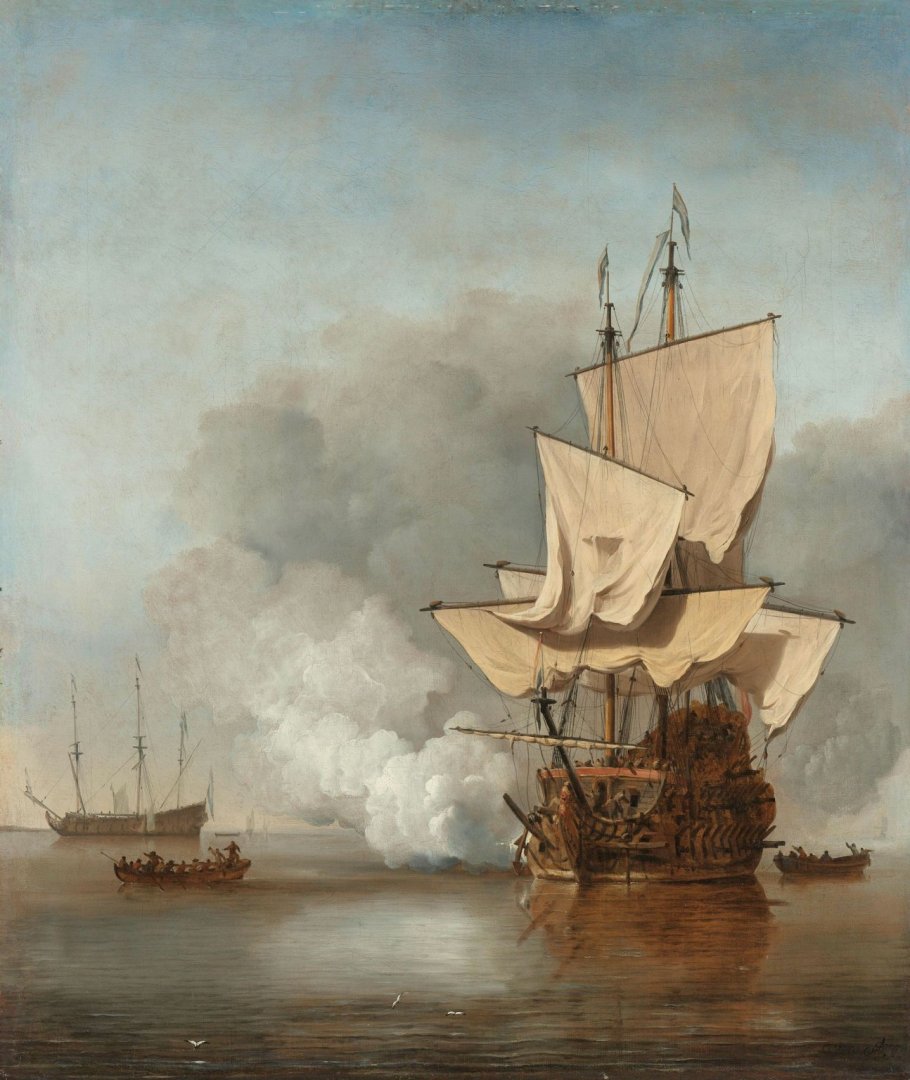
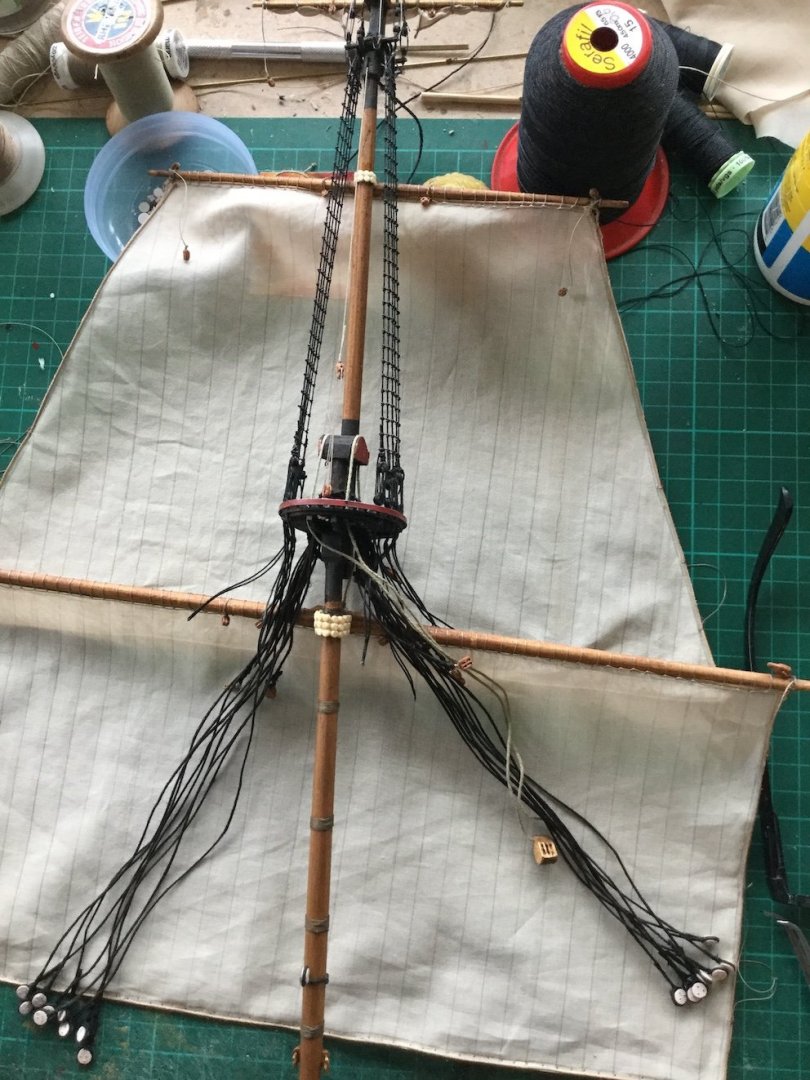
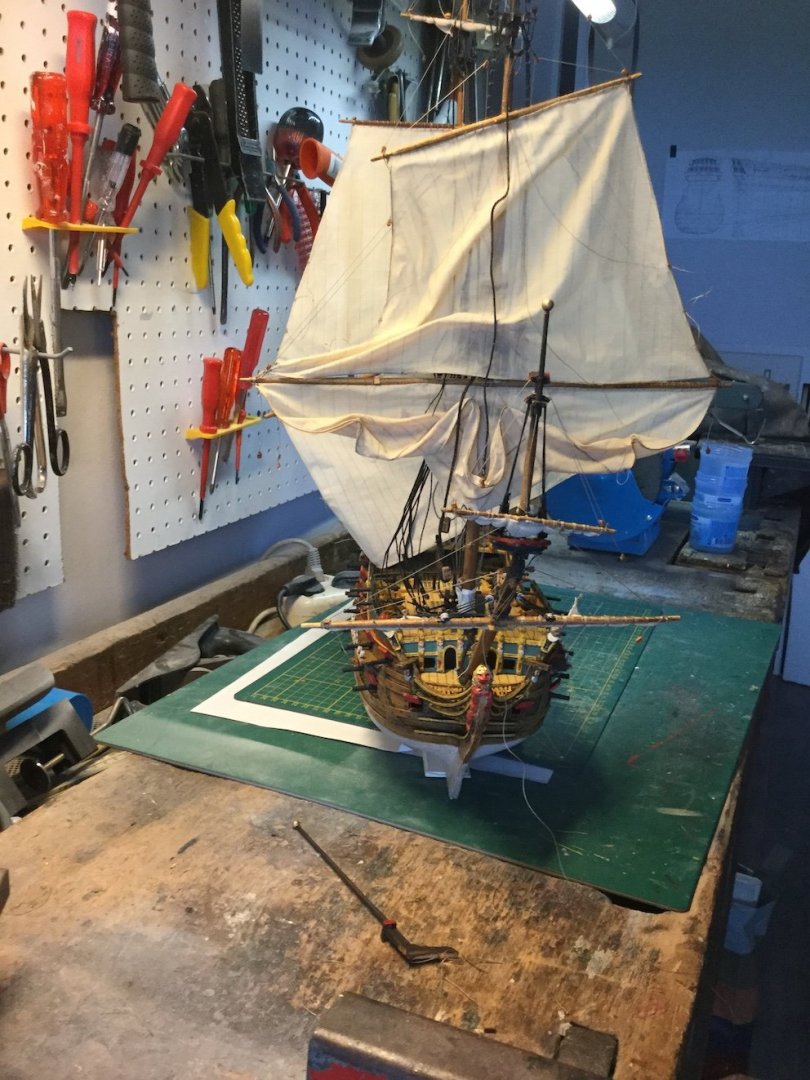
A small cog c. 1410 by Brinkman - FINISHED - scale 1:20
in - Subjects built Up to and including 1500 AD
Posted
The bowsprit might originally be used to serve for the bowlines (I suppose).